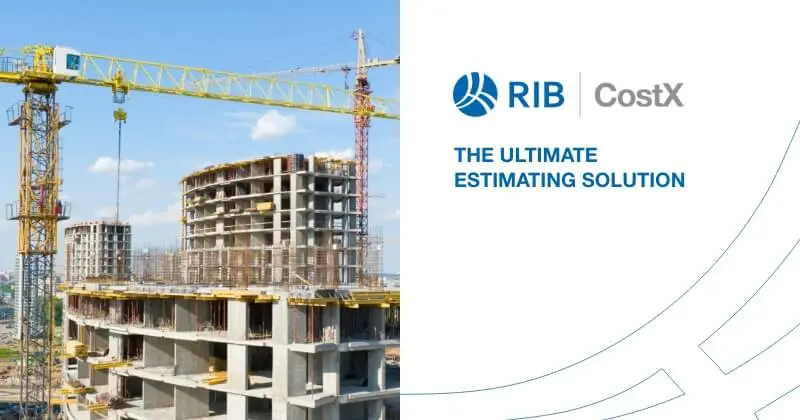10 mins read
What is Detailed Estimating? How Comprehensive Estimates Remove Project Risk and Uncertainty

By their very nature, all types of estimates in construction must be detailed and thorough to add value and prevent errors and misunderstandings. This is especially true when estimates are used to make important budgetary, scheduling, and procurement decisions. A detailed estimate combines timely data, valid assumptions, and historical data inputs to produce valuable and reliable output.
In this blog post, we explain how detailed estimating works, when it is done, and why it is important. We also review some key considerations that should always be included in the construction cost estimation process.
What is Detailed Estimating?
Detailed estimating in construction is a process used to produce in-depth and precise approximations of total project cost. A detailed estimate includes all anticipated labor, material, and equipment costs, along with overhead expenses like inspections and permits.
This type of estimating can only be performed when the design drawings and construction specifications are complete enough to list material types and quantities, and assess the labor and equipment requirements based on realistic projections. Architects, designers, and project managers frequently participate in the estimation process, but contractors or certified professional construction estimators are typically responsible for preparing the final calculations and reports.
When and why are Detailed Estimates Used?
Detailed estimates require a complete data set, including reliable information on the scope of work, site conditions, and design. These constraints mean the process can only be performed late in the planning stages, after the most important decisions with the potential to impact costs have already been made. The timing of the estimate completion is critical, since detailed cost information is used to support:
- Planning of resource and material procurement
- Bid tendering and evaluation activities that require an accurate baseline for comparison
- Cost control programs that utilize detailed material and labor breakdowns
- Financial reporting and budgeting activities used to track expected vs. actual expenses
Most projects will utilize preliminary estimates early on to get a high-level view of expected costs and resource requirements, but detailed estimates bring the accuracy and precision needed to plan construction tasks and purchases with more confidence and less risk.
Key Components of Detailed Estimates

A detailed construction estimate is compiled based on multiple project and cost information sources. Each data source must be verified to ensure it can be used without introducing errors or inaccurate assumptions. The key components of these estimates include:
Quantity takeoff
A quantity takeoff is an essential component of any detailed estimate, since it provides the precise quantity of materials like lumber, pipe, bricks, and concrete that will be needed, based on the construction drawings and specifications. Advanced software simplifies the quantity takeoff process by pulling the necessary data directly from 2D or 3D drawing files.
Unit costs
Once the material quantities are calculated, obtaining unit costs for each material is the next important consideration. Contractors and estimators use various sources to find timely unit cost information, including published cost guides, online databases, direct supplier quotes, and historical data. Skilled estimators also consider seasonal variation and demand factors that can cause unit costs to fluctuate.
Subcontractor quotes
Labor costs can be more difficult to estimate, with less relevant information found on public websites. At the same time, new subcontractor quotes cannot be tendered until the detailed estimate is prepared. Project teams can resolve this dilemma by maintaining their own comprehensive subcontractor databases for comparison and bid tendering purposes.
Overhead & markups
Indirect costs and overhead can be even more difficult to predict than direct material and labor costs, since administrative fees, insurance, utilities, and other common expenses might vary significantly from project to project. Historical data adjusted for current prices and conditions can be used to ensure overhead items are not overlooked.
Markups are added to material, labor, and equipment costs by contractors to ensure an adequate profit margin. This must also be factored in for items not directly sourced by the client or project owner. Contractors utilize markups to mitigate delays, price fluctuations, or additional overhead costs.
Contingency
Construction contingency budgets set between 5% and 10% of the overall project cost are typical in the construction industry. They provide an essential buffer for waste, damage, scope changes, weather events, and other unforeseen events that lead to increased costs. Adding the contingency to the detailed estimate highlights this uncertainty and provides a more realistic approximation of total project costs.
What are the Benefits of Detailed Estimating?
A detailed estimating process is more time-consuming and exacting than conceptual or preliminary estimating, but the extra time and effort pay off through benefits that include:
- Realistic budgets covering all aspects of the project
- Efficient resource management and allocation
- Avoidance of cost overruns and contract disputes
Detailed estimates help to verify whether the costs anticipated in the conceptual phase align with actual costs, setting realistic expectations for clients that extend from groundbreaking to completion. These discerning clients also want to achieve excellence in design and construction without exceeding the project budget, and an accurate, well-researched estimate helps to make this possible.
How to Perform Successful Detailed Estimating in Construction

As you’ve learned, detailed estimating requires close attention to detail and a wealth of information to generate accurate cost decisions. The best practices below outline some key steps to follow to ensure success.
1. Analyze the project
The existence of completed drawing packages, design specifications, and other construction contract documents makes it easier to analyze the project in fine detail. A thorough review of this information gives the estimator a good indication of the time, materials, and other resources that will be required, along with the risk factors and potential roadblocks that might cause delays or increase overhead expenses.
2. Perform a quantity takeoff
The quantity takeoff is one of the basic elements of the estimating process, so completing this step correctly is one of the most important considerations during the detailed estimating process. For example, duplicating or omitting elements of the project during the takeoff process can have serious downstream consequences. When digital takeoff methods or building information modeling (BIM) are utilized to accelerate the takeoff process, it is essential to provide robust training to ensure these processes are well-understood and appropriately executed.
3. Assign accurate costs
Defining unit costs is another element of the estimating process that should always be given extra care and attention, since inaccuracies can lead to overruns and other financial consequences. While real-time cost databases, industry benchmarks, and relevant historical quotes can all be leveraged to define cost information, expert collaboration, standardization processes, and statistical analysis techniques help to produce a more accurate estimate based on multiple sources.
4. Review and adjust
The word detailed (rather than final) was chosen to define estimates produced based on a complete set of project information, since no estimate is ever truly finalized until the project is finished. Key stakeholders should review detailed estimates after they are prepared, then continuously review and update throughout the project. This ongoing process helps to mitigate common material and labor price fluctuations.
5. Support yourself with professional software
Professional takeoff and estimation software is ideally suited for detailed estimates, leveraging complete CAD files and specifications. Professional takeoff and estimating platforms like RIB CostX reduce errors and accelerate estimating by automating quantity takeoffs from all common 2D and 3D design formats. CostX also allows live links to cost and subcontractor databases to ensure timely and accurate costing, while providing flexible breakdown structures and support for corporate-compliant reporting.
6. Consider storage and transportation costs
The quality and quantity of data available to prepare a detailed estimate make them more accurate than conceptual or preliminary estimates. However, it is still possible to overlook factors that can significantly impact project costs. Transportation costs are one prominent example, since moving heavy equipment and bulk material loads to remote locations can be significant. The same applies to storage costs when construction sites are inadequate to house all materials and equipment without the benefit of outside storage lots or facilities.
7. Consider alternate methods
Software tools have made it easier to adapt the estimating process based on the available information and time constraints. For example, analogous estimating methods rely heavily on historical information, while parametric methods combine known unit rates for labor, materials, and other cost elements with statistical techniques to paint a complete picture. Skillful estimators must decide which practices will produce the most accurate results.
Conclusion
Detailed estimates are an essential part of every construction project since they set the stage for the critical planning, bidding, budgeting, and cost control activities that follow. Transferring the benefits of accurate estimates into efficient, cost-effective execution requires a unique combination of skills, experience, and software.
RIB CostX, our estimating and BIM takeoff software, has proven invaluable for construction teams seeking to reach the next performance plateau. Additional features like instant revision tracking, embodied carbon calculations, and full BIM support meet the takeoff and estimation needs of tomorrow, today.
If you want to join the thousands of companies that use CostX as their trusted estimating solution and benefit from automated, error-free estimates, get your free demo today!

Most Recent
10 mins read
29 mins read
27 mins read
24 mins read
Blog Categories

Ebook











